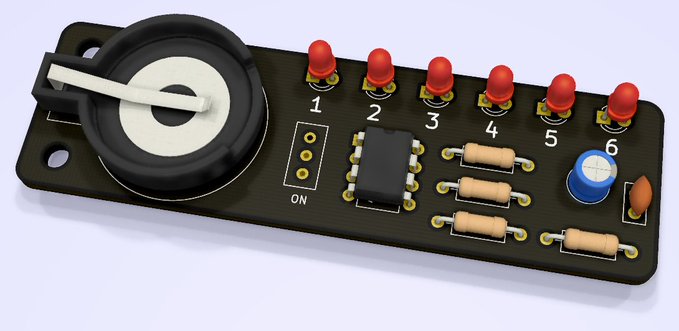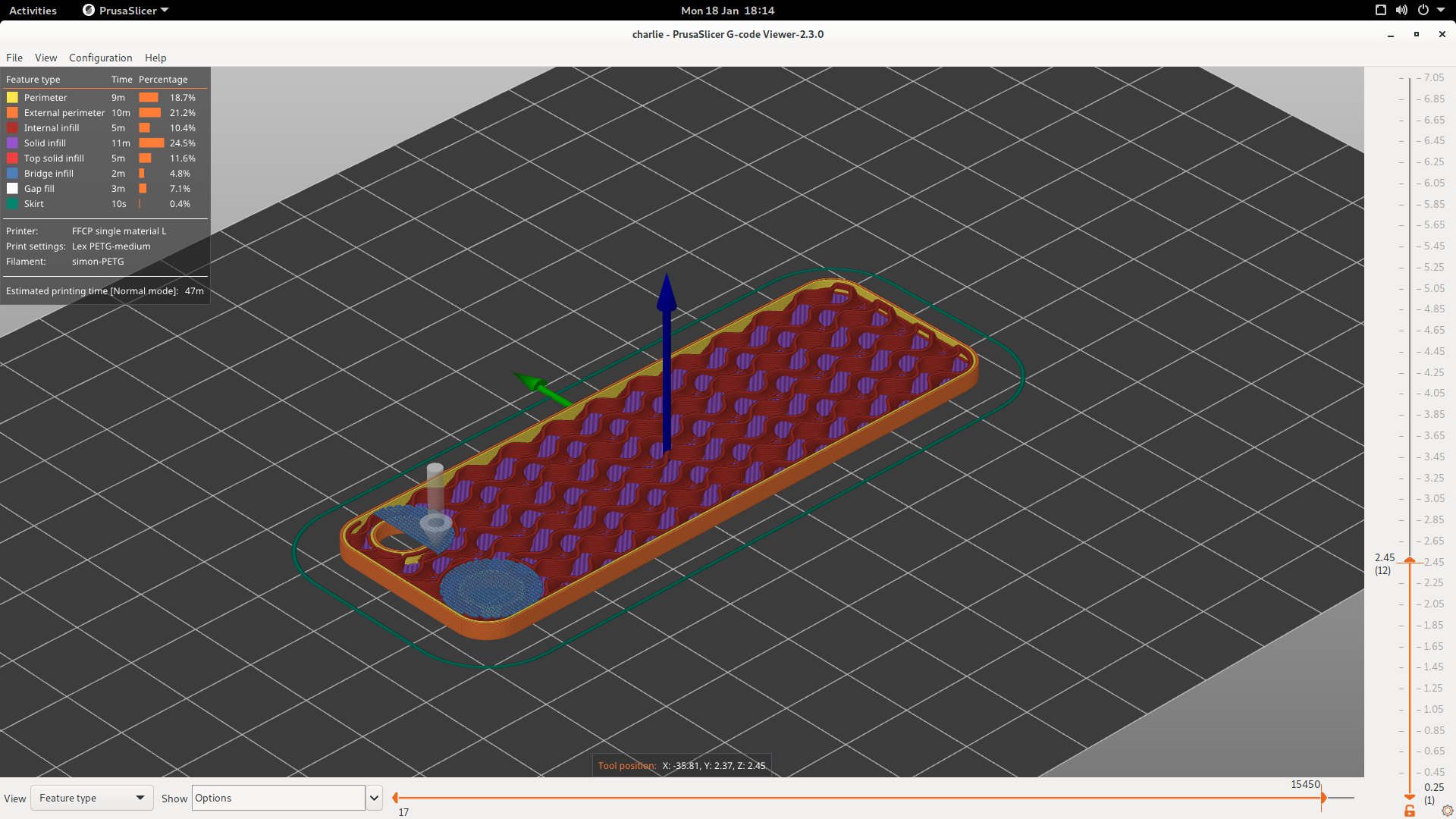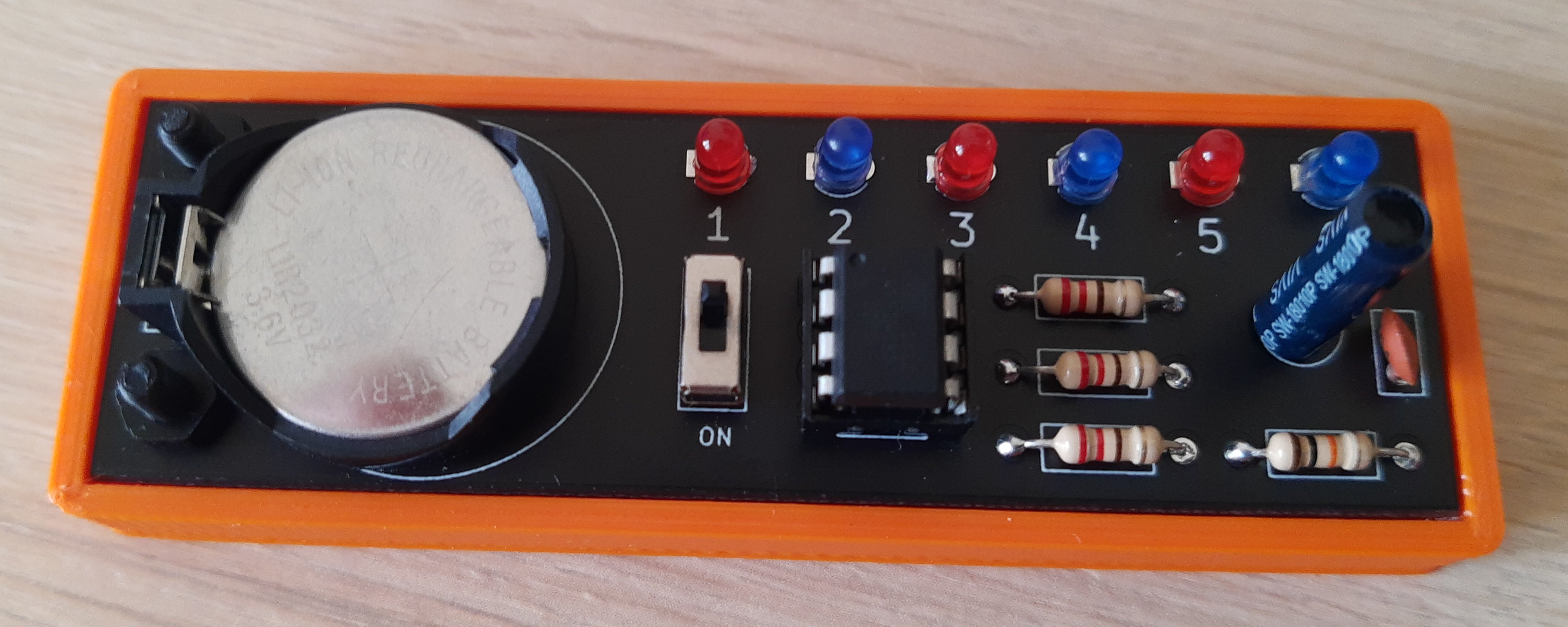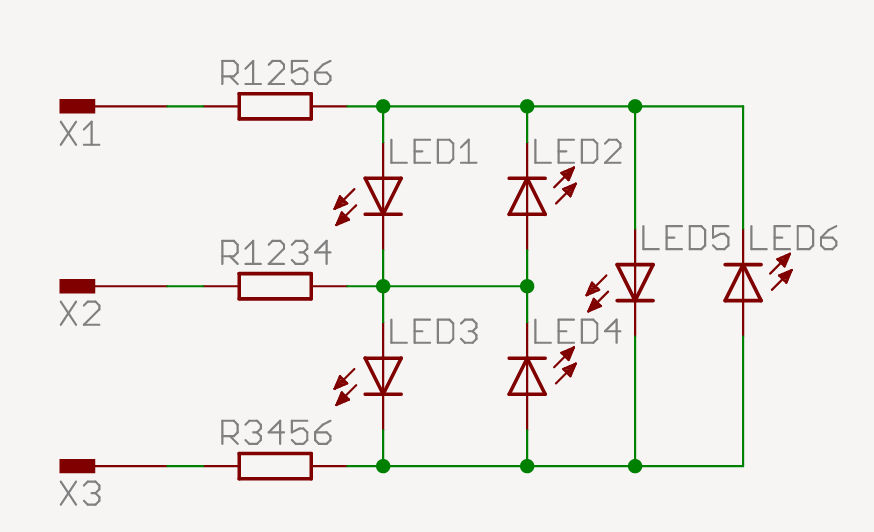e-Dice
My charlieplexed dice boards have arrived from JLCPCB. It uses an ATTiny85 and vibration sensor and only three output pins to drive 6 LED’s. I’m powering this via a rechargeable LIR2032. I also made a charger for it using my favourite TP4056 modules with Rprog replaced with a 30k resistor to set the charge current to about 35mA, a bit of spare perfboard and a coincell holder (and yet another 3D printed bumper!) It works well as cost under a Pound instead of a tenner or more that the commercial ones cost!

I made a bumper for it, it’s sort of a smaller version of the one used for the decade counters, however I used a sacrificial layer inside the countersunk screw hole, so it came out nicely without supports. The method works well and I will use it for some bigger designs as more of a test.

The PCB turned up and I realised the panelization process had removed the rounded corners, so had to modify the bumper case a bit:

And a video of it in action:
The pinout is as follows, see also the wiring diagram (I inititally made a perfboard version using this):
PB0/D0 = physical 5 = x1 in diagram
PB1/D1 = physical 6 = x2 in diagram
PB2/D2 = physical 7 = x3 in diagram
RST = physical 1 to vibration/tilt sensor

The code is:
void one()
{
pinMode(PB0, OUTPUT); digitalWrite(PB0, HIGH);
pinMode(PB1, OUTPUT); digitalWrite(PB1, LOW);
pinMode(PB2, INPUT);
}
void two()
{
pinMode(PB0, OUTPUT); digitalWrite(PB0, LOW);
pinMode(PB1, OUTPUT); digitalWrite(PB1, HIGH);
pinMode(PB2, INPUT);
}
void three()
{
pinMode(PB0, INPUT);
pinMode(PB1, OUTPUT); digitalWrite(PB1, HIGH);
pinMode(PB2, OUTPUT); digitalWrite(PB2, LOW);
}
void four()
{
pinMode(PB0, INPUT);
pinMode(PB1, OUTPUT); digitalWrite(PB1, LOW);
pinMode(PB2, OUTPUT); digitalWrite(PB2, HIGH);
}
void five()
{
pinMode(PB0, OUTPUT); digitalWrite(PB0, HIGH);
pinMode(PB1, INPUT);
pinMode(PB2, OUTPUT); digitalWrite(PB2, LOW);
}
void six()
{
pinMode(PB0, OUTPUT); digitalWrite(PB0, LOW);
pinMode(PB1, INPUT);
pinMode(PB2, OUTPUT); digitalWrite(PB2, HIGH);
}
void setup()
{
// read from unconnected analog pin for entropy
randomSeed(analogRead(A3));
// random number 1-6
long rndnum = random(1, 7);
// loop through all numbers
one(); delay(100);
two(); delay(100);
three(); delay(100);
four(); delay(100);
five(); delay(100);
six(); delay(100);
// display final number
switch (rndnum)
{
case 1:
one();
break;
case 2:
two();
break;
case 3:
three();
break;
case 4:
four();
break;
case 5:
five();
break;
case 6:
six();
break;
}
}
void loop()
{
}
And the Makefile for arduino-cli:
# attiny85 8mhz internal oscillator
FQBN = ATTinyCore:avr:attinyx5:LTO=enable,TimerClockSource=default,chip=85,clock=8internal,eesave=aenable,bod=disable,millis=enabled
all:
arduino-cli compile --output-dir=build --fqbn $(FQBN) $(notdir $(CURDIR)).ino
ispload:
arduino-cli upload --input-dir=build -b $(FQBN) -P usbasp $(CURDIR)
burn_bootloader:
arduino-cli burn-bootloader -b $(FQBN) -P usbasp -v $(CURDIR)
clean:
rm -rf $(CURDIR)/build